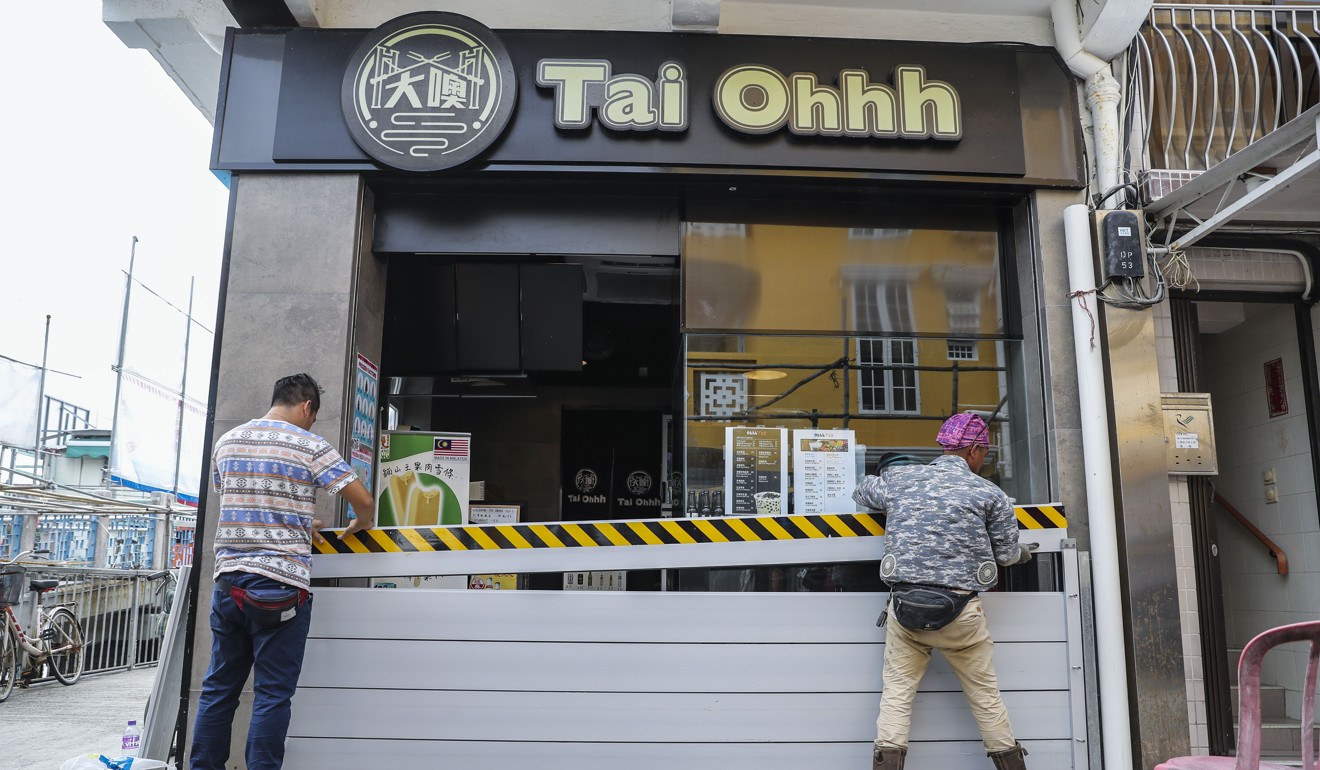
Hong Kong leader Carrie Lam warns residents not to take any chances as Super Typhoon Mangkhut looms
Stay indoors and don’t put yourselves or rescue services at risk, chief executive says after convening second meeting to coordinate contingency plans among departments and organisations
The chief executive said her administration had prepared early for the arrival of the super typhoon, and the Emergency Monitoring and Support Centre – spearheaded by the Security Bureau – would be activated soon after the strong wind signal No 3 had been issued.
The Hong Kong Observatory issued the standby signal No 1 at 10.20pm on Friday, meaning a tropical cyclone would come within 800 kilometres of Hong Kong. It will consider issuing the No 3 signal on Saturday.
Mangkhut is predicted to bring destructive winds and rain to the city on Sunday.
“I hope citizens will stay indoors and not go outside, especially not to check out the storm surge, or surf, as that would not only put themselves in danger, but also put pressure on rescue services,” Lam said.
“We are taking every step to prepare Hong Kong for this typhoon. In Hong Kong, we have a duty as the government to make all the necessary preparations, included mobilising all the relevant departments to make precautionary measures. During the typhoon we need to be able to respond effectively to mitigate any damage or any loss of lives and injuries.”
In preparation for the heavy rain expected, the Drainage Services Department is installing flood barriers in low-lying areas such as Tai O, Lei Yue Mun and Heng Fa Chuen, while the Home Affairs Department is ready to help residents evacuate if necessary, Lam said.
That included arranging coaches to ferry residents from Tai O, where many seniors live.
More than 40 temporary shelters would open to the public once the No 3 signal was issued, Lam added.
She also said the relevant departments were trying to draw in extra manpower, in a bid to restore the city to its normal state as soon as possible once Mangkhut had passed.
Asked if she feared the super typhoon would put infrastructure, such as the Hong Kong-Zhuhai-Macau bridge, in danger, Lam said the bridge, and other public work projects, had been designed to survive natural disasters to a certain extent.
One year on from Hato’s deadly hit, is Macau better prepared for a monster storm?
Highways Department deputy director Chui Wing-wah said the bridge was designed to “very high standards” and had been subject to thorough safety tests.
“We are confident the bridge will withstand very strong winds,” he said.
Chui added that what was more important was that they would deploy enough staff to monitor the infrastructure during the storm, which meant they would be able to respond in the first instance in case of any incidents.

China’s National Meteorological Centre said on Friday at 6pm the maximum sustained wind speed near Mangkhut’s centre reached 65 metres per second (234km/h or 145mph) as it moved through the Philippines. It warranted level 17 – the highest – on the centre’s typhoon wind speed scale.
It forecast that by Sunday the typhoon would weaken to level 14 to 16, or with a wind speed of 45 to 52 metres per second near its centre.
Engineer warns for safety of mega bridge in massive storm
According to an earlier report from Hong Kong-based state-owned newspaper Wen Wei Po, which cited the bridge authority’s chief engineer Su Quanke, the bridge was built to withstand typhoons that reached level 16 on the scale.
The main beam of the bridge weighed 420,000 tonnes, which meant it was equivalent to “the weight of 10 “Bird’s Nest” stadiums or 60 Eiffel Towers, and able to withstand level 16 typhoons and magnitude 7 earthquakes”, Su said.


